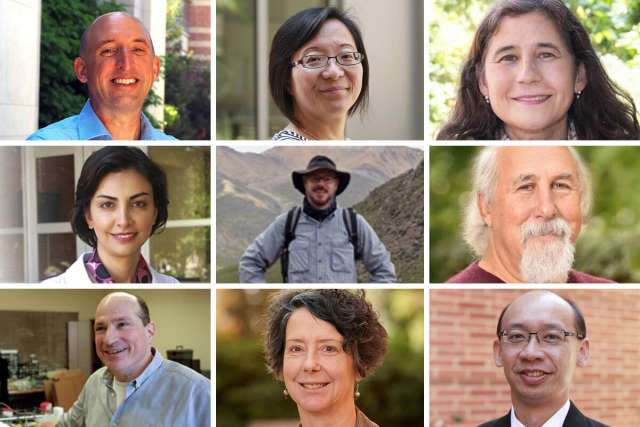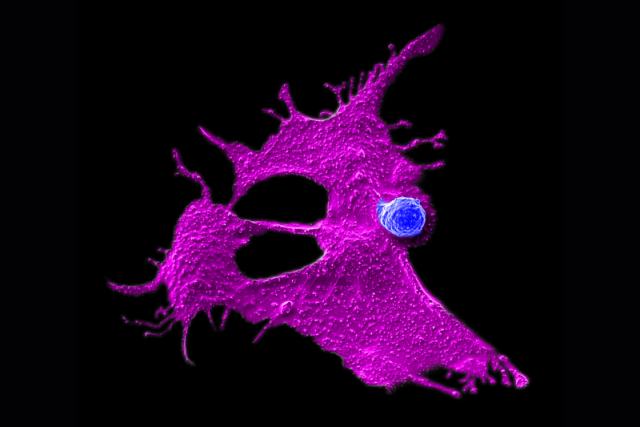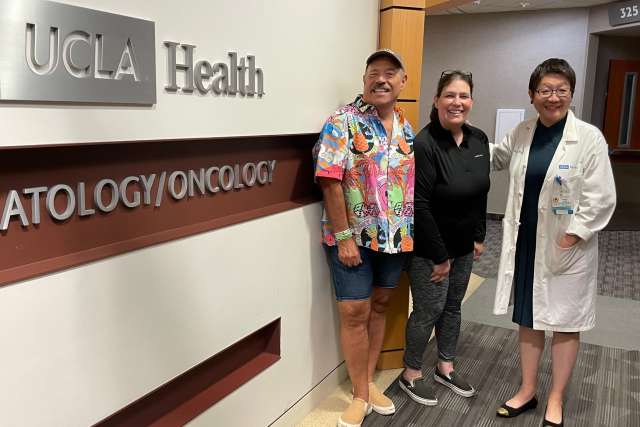Ten UCLA researchers have been elected fellows of the American Association for the Advancement of Science, the world’s largest multidisciplinary scientific society, the association announced today.
The UCLA faculty members are among 471 newly elected AAAS fellows recognized for their significant contributions to the advancement of science and its applications in service to society. They will be celebrated at a forum in Washington, D.C., June 7.
“This year’s class of fellows are the embodiment of scientific excellence and service to our communities,” said Sudip S. Parikh, CEO of AAAS. “At a time when the future of the scientific enterprise in the U.S. and around the world is uncertain, their work demonstrates the value of sustained investment in science and engineering.”
Founded in 1848, the nonprofit association, which publishes Science and its family of related peer-reviewed journals, has more than 120,000 members across nearly 100 countries and includes more than 250 affiliated societies and academies of science serving 10 million members.
UCLA’s new fellows are:
Troy Carter
Professor of physics and astronomy, UCLA College
Carter studies waves, instabilities, turbulence and transport in magnetically confined plasmas to understand processes in space and astrophysical plasmas. Much of his work on plasmas has focused on the development of carbon-free electricity generation through nuclear fusion — an energy source that mimics the processes powering the sun — including how to better control plasma dynamics to improve the efficiency of fusion reactors. Carter, who directs the Plasma Science and Technology Institute at UCLA, was recently appointed director of the fusion energy division at the Oak Ridge National Laboratory and is currently on a leave of absence from the university.
♦ ♦ ♦
Jane Chang
Professor of chemical and biomolecular engineering and of materials science and engineering, UCLA Samueli School of Engineering
Chang, who holds the William Frederick Seyer Chair in Materials Electrochemistry and is a member of the California NanoSystems Institute at UCLA, focuses on developing multifunctional complex oxide films that have highly tailored electronic, chemical, thermal, mechanical and biological properties. In leading the Electronic Materials Synthesis and Plasma Processing Lab, she and her team have developed plasma etching at the atomic scale, enabling the creation of structured films useful in microelectronics, energy devices and other advanced materials applications. She previously directed the Center for Function Accelerated nanoMaterial Engineering, a multidisciplinary research consortium headquartered at UCLA.
♦ ♦ ♦
Yvonne Hernandez-Kapila
Professor of dentistry, UCLA School of Dentistry
Hernandez-Kapila, associate dean of research at the dentistry school and investigator at the UCLA Health Jonsson Comprehensive Cancer Center, studies oral head and neck cancers and the role of the microbiome and virome in human health and disease across the oral-gut-brain axis. Her work has identified important host-microbe interactions and cellular and molecular mechanisms that govern oral cancer carcinogenesis and the pathogenesis of periodontal disease. Hernandez-Kapila’s lab at UCLA conducts basic, translational and clinical studies on oral and systemic disease connections.
♦ ♦ ♦
Mona Jarrahi
Professor of electrical and computer engineering, UCLA Samueli School of Engineering
Jarrahi, who holds the Northrop Grumman Chair in Electrical Engineering, focuses on the development and application of novel electromagnetic techniques. As director of the Terahertz Electronics Laboratory at UCLA, she studies ultrafast electronic and optoelectronic devices with a focus on expanding the capabilities of terahertz sensing, imaging and communication systems for applications in a variety of areas, ranging from atmospheric research and biological analysis to medical imaging. Jarrahi is also a member of the California NanoSystems Institute at UCLA.
♦ ♦ ♦
Gregory Okin
Professor and chair of geography, UCLA College
Okin, a member of the UCLA Institute of the Environment and Sustainability, studies how physical, chemical and biological processes act across landscapes to produce observed environmental patterns and how these patterns modulate large-scale interactions within the Earth system. Much of his research, which makes heavy use of remote sensing and spatial modeling, focuses on plant-soil-atmosphere interactions in the world’s drylands, which cover 40% of the Earth’s land surface.
♦ ♦ ♦
James Rheinwald
Associate project scientist in molecular, cell and developmental biology, UCLA College
Rheinwald’s work focuses on the molecular and genetic processes within skin cells that contribute to the development of tumors, and his research has identified the role of various proteins and genes in regulating cell growth, survival and death, processes often disrupted in cancer. In addition, he has been a pioneer in devising methods for cultivating human skin cells known as epithelial cells in the laboratory — an innovation that has been crucial in developing new strategies for testing drugs and therapies that target cancer cells.
♦ ♦ ♦
Barney Schlinger
Professor of integrative biology and physiology and of ecology and evolutionary biology, UCLA College
Schlinger’s laboratory studies how hormones influence the structure and function of the brain in order to control complex behavior in vertebrates, particularly songbirds. His research has explored an array of wild bird species, from jays to sparrows, and he has developed a model system for understanding neuromuscular and hormonal control in the courtship behavior of the male golden-collared manakin, a small tropical bird that lives in the lowland forests of Panama. Schlinger’s work links behavioral neuroendocrinology with diverse areas of anatomy, physiology and evolutionary theory.
♦ ♦ ♦
David Saltzberg
Professor of physics and astronomy, UCLA College
Saltzberg’s work focuses on understanding the fundamental forces and particles that make up the universe. His research, conducted in part with a team at CERN’s Large Hadron Collider, has probed the top quark, the most massive subatomic particle, and he is working to discover what could be the heaviest known particle. In addition, Saltzberg focuses on detecting, measuring and uncovering the nature of neutrinos, elusive subatomic particles with no electrical charge and almost no mass. He is also known for his contributions at the intersection of science and education and has served as a science consultant for TV and films, including “The Big Bang Theory” and “Oppenheimer.”
♦ ♦ ♦
Stephanie Ann White
Professor of integrative biology and physiology, UCLA College
White, who directs UCLA’s Undergraduate Neuroscience Interdepartmental Program, studies the biology behind how the brain makes communication possible. Among her key interests is how social interaction influences the gene expression and neural circuitry that mediate song-learning behavior in birds — an important element in attracting mates, establishing territory and coordinating group behaviors. That research has led her lab to identify a gene called FoxP2, which plays a crucial role in the singing of male zebra finches and which may also be important in disorders of speech, including autism.
♦ ♦ ♦
Chee Wei Wong
Professor of electrical and computer engineering, UCLA Samueli School of Engineering
Wong, who holds the Carol and Lawrence E. Tannas, Jr. Chair in Engineering, specializes in quantum optics and photonics, with a focus on nonlinear, quantum and ultrafast optics and precision measurement. He leads the Mesoscopic Optics and Quantum Electronics Laboratory, which studies the intersection of optical physics, device optoelectronics and solid-state science and engineering, leveraging photonic crystals and chip-scale photonics with applications in industry. He is a member of the California NanoSystems Institute at UCLA and the B. John Garrick Institute for the Risk Sciences at UCLA.




